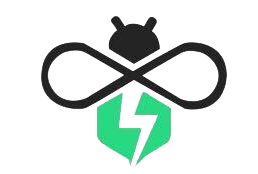Off-grid systems need to account for the initial surge of power required to start motors or pumps, regardless of the battery type used.
Electric power tools, construction site equipment and pumps, often require several times more energy during startup than their continuous energy rating due to their inductive or high startup current draw.
When an electric pump starts up, it may require a surge of power that is 3-4 times greater than its rated power, which means a 2kW pump could require 6-8kW of power during startup.
Many devices do not provide information on their surge power requirements, so it can be helpful to measure the actual surge draw during the design process if possible.
In “on-grid” energy systems, surge energy demands during device startup are not an issue because the grid can supply any additional energy needed beyond what is provided by the on-site batteries and converter.
Off-grid systems must always account for the surge or startup energy demands of on-site devices during system design, as there is no AC grid to provide additional energy beyond what is already available.
The AC converters used on the site must be able to handle the surges by having a sufficient output rating.
AC converters can usually handle short-term surge energy demands well, but it is still important to verify that their surge capacity is appropriate during system design.
Systems designed with lead-acid batteries can handle high surge energy demands, but if the battery is undersized, the voltage drop that occurs can still cause the AC converter to be driven below its cut-off voltage.
Lead-acid battery systems can handle high surge energy demands, but an undersized battery can still cause a voltage drop that leads to the AC converter being driven below its cut-off voltage.
Lithium batteries can usually handle high surge output, but their Battery Management System (BMS) can limit this capability. If the surge limit is exceeded, the BMS may disconnect the battery pack for self-protection, which could cause the off-grid system to drop out.
Importantly, for certain ESS based tech, there are various circumstances (including battery maintenance cycle requirements) in which the rated maximum output current is not instantly available from all batteries at once.
If a surge demand peak exceeds the continuous output rating for the number of batteries on site, there are several ways to address the issue other than installing more batteries. A traditional approach to handling high motor startup loads is to use a “soft-starter”.
It is a commonly available device that can be added to the power path of a device with high startup surge current. It gradually increases the AC frequency of the energy sent to the device, allowing the electric motor to start moving slowly and build up to full operating speed. This approach is effective, but you need one controller per device causing the surge.
If there are numerous surge-causing devices or if soft-starters are not feasible for other reasons, there is another solution to consider.
Electrik Bee’s ESS based PowerPod comes with a built-in converter – Zealor® that helps gain that power surge without damaging the batteries in the device.
It is our state-of-the-art converter that crosses hurdles of jerk load, under load for maximum time, at cheapest cost and manages real time frequency fluctuation while repairing voltage damage.
Zealor is our own chipset design that helps three times over and under-load requirements, and cuts ESS costs by half.
Electrik Bee’s PowerPod integrates in-house converter tech that helps solve jerk load requirements of construction and industrial companies, and provides seamless power harmonics to decarbonize their power backup needs.

